Rutherglen’s muscat mile and place of wine-making mystery
The making of muscat is shrouded in mystery in this charming Victorian town.
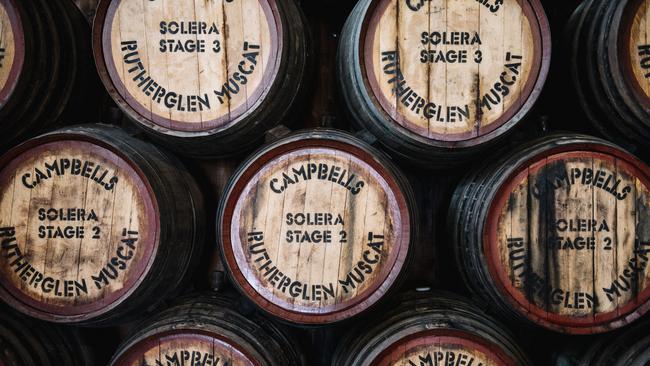
Robyn Pfeiffer and Kylie Barton are sitting at what Pfeiffer calls the posh table in her Victorian winery’s barrel room, welcoming a handful of outsiders into a mysterious world. The pair represent Big Muscat and the matching muscat-coloured chairs are just one cue to this sweet, unctuous wine. It inhabits enormous oak casks, and it’s in the air around us; the dark stains on the rafters and ceiling are from the “angels’ share”, the not inconsiderable percentage that evaporates out of the barrels. It’s also in glasses and bottles in front of us, which we shall sniff, swirl, sip and combine into personal blends at this True Muscat Experience. Pfeiffer’s daughter Jen, winemaker at the family’s eponymous vineyard, calls this “the dark art of winemaking”.
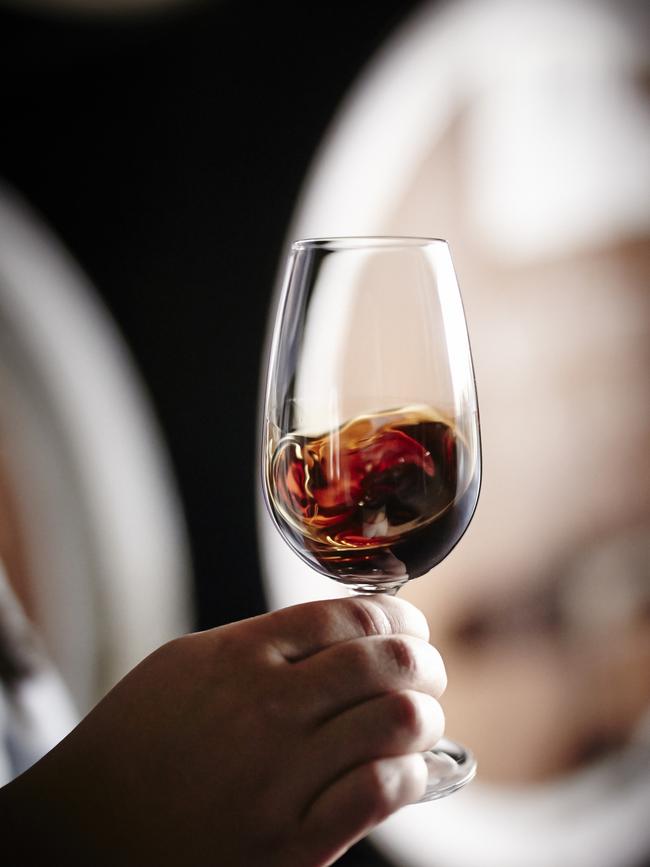
Muscat, more specifically Rutherglen muscat because there is nothing like it in the world, coats this small town on the Murray, 50km west of Albury. Only two of the area’s 19 wineries don’t make it, and the greatest are those blended to exacting benchmarks. To ensure these standards are maintained, they’ve agreed on four classifications: Rutherglen, Classic, Grand and Rare. The entry-level Rutherglen may be an average five to 10 years, topping at 25 to 50 for the Rare, the figures differing between makers because, as Barton says, the classifications mandate style not age. Those who produce all four are, in Pfeiffer’s eyes, the true muscat-makers of Rutherglen. “There are only six of us, and we’re the only six in the world.”
We work-experience muscateers have samples of the four before us, and Barton urges us to compare colour and aroma. There are no wrong answers, but I doubt she agrees with me about the tobacco notes I get in the Rutherglen, although we concur on orange blossom in the Grand. The obvious discernments are in flavour, which parallel life itself: fresh and cheeky as a youngster, the Classic then displays acidity. The mature Grand is richer, while the Rare achieves what anyone should aspire to in old age: balance, complexity and still a measure of life.
We’re given two muscats to mix, a single year (2016) Barton describes as “all arms and legs”, and a well-settled 10-year blend. I try a 50/50 first, and while this tempers the youngster’s sharpness, overall it’s a bit skittish. So I halve the 2016 content for my second blend and it just drapes my palate, like trying on a cashmere sweater that fits perfectly. We’re allowed a third go, even though mine’s a dead rubber, and the extra dollop of the 2016 I use tips it over the edge. Bin No.2 it is, now decanted into a 200ml bottle to take home.
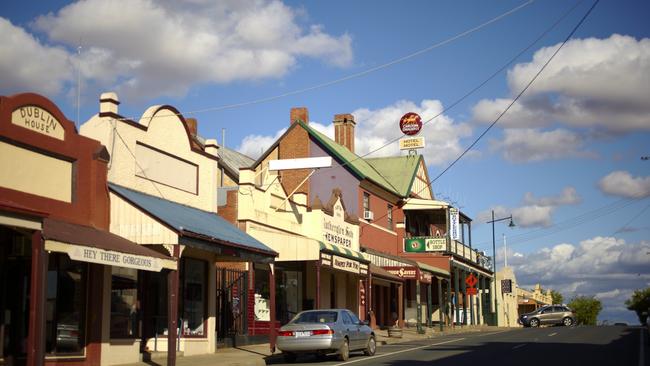
All Saints is another of the six “true masters”, and in the barrel room of its 1864 faux castle winery, Nick Brown admits it’s daunting handling old muscats made generations before him. But these people have each other’s backs. Every year the Rutherglen producers meet for a mutual tasting of everyone’s creations and ensure they’re all on the same page. For example, All Saints’ Rutherglen tasted “a bit old” at the last confab, so Brown will freshen it up. “We all know each other well enough to trust each other’s opinions.” Brown also lets us try something beyond Rare, a Museum muscat that’s an average 100 years old, and at $1200 he only bottles it to order. His best customer is a Melbourne tattooist.
Brown says mavericks in Rutherglen might get driven out of town, but that doesn’t mean innovation outside the classification system is shunned. Rowly Milhinch of Scion Wine finds it a great challenge to do muscat differently, one he’s met with aperitif styles such as Muscat X. It has less sugar, and Milhinch drinks it over ice or mixes it with Champagne. His Muscat Nouveau is a single-vintage that works with creamy desserts; he likes to spritz it with soda. And in partnership with a distiller in Yackandandah, they have Muscat Gin.
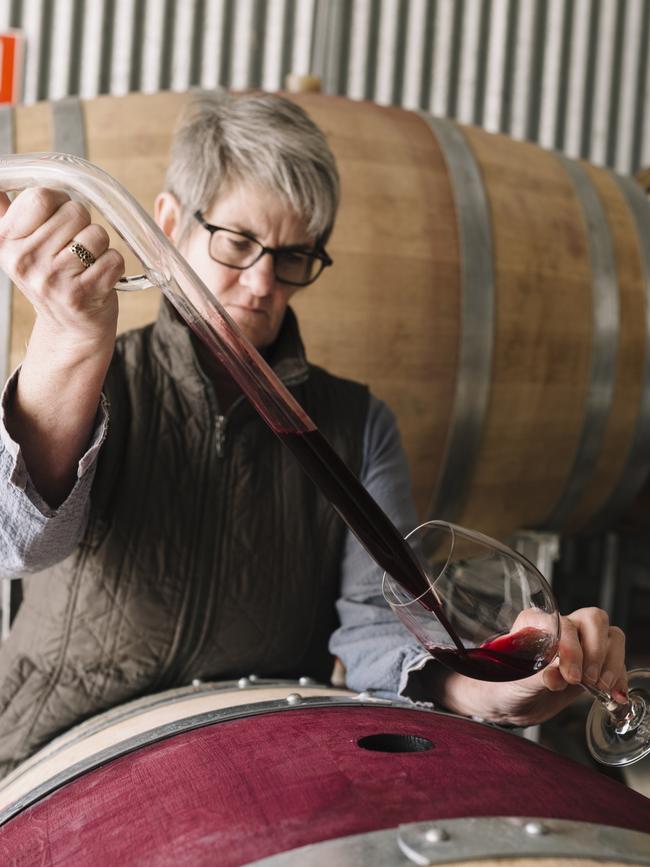
Mandy Jones of Jones Winery also has her eye on aperitifs. Pouring a glass of Apero, she reveals it’s “white port”, a blend of pedro ximenez and trebbiano fortified with spirit that’s her “veranda drink”. Correll meanwhile is a blend of fortified wine, orange and spices that elsewhere might be called vermouth. Not to be confused with Jones’s Apero, apera is what Rutherglen chose for its pre-dinner tipple when it had to stop labelling it sherry. David Morris, another of the Super Six, produces two sterling examples: a pale flor fino, and aged amber, or amontillado. For Morris’s latest line, they’ve imported a Scottish distiller to make a single malt whisky the Rutherglen way, that is, finished off in muscat barrels.
The marketplace has also always equated this area with big red table wines, and at every turn you will encounter rich shiraz and that peculiarly Rutherglen staple, durif. And not just in still form; sparkling versions are almost as ubiquitous. Now fascinating new varieties are coming through. Anderson is using the great red grape of Georgia, saperavi, while Stanton & Killeen is championing warmer-climate styles from Portugal, such as the four rolled into a lovely red they call The Prince. Need a breakfast wine? Michael Chambers at Lake Moodemere Estate has Tara, a 6.5 per cent blend of muscat and grenache blanc.
Buller’s chief winemaker, Dave Whyte, is also its head distiller, and out of a pot still called Winston – “because it’s short and fat” – come four gins. The likes of elderflower and even shiraz gin are almost mainstream these days, but nowhere else will you find Golden Child, a gin amplified with 50-year-old Rare, the $250 muscat that Robert Parker has awarded 100 points.
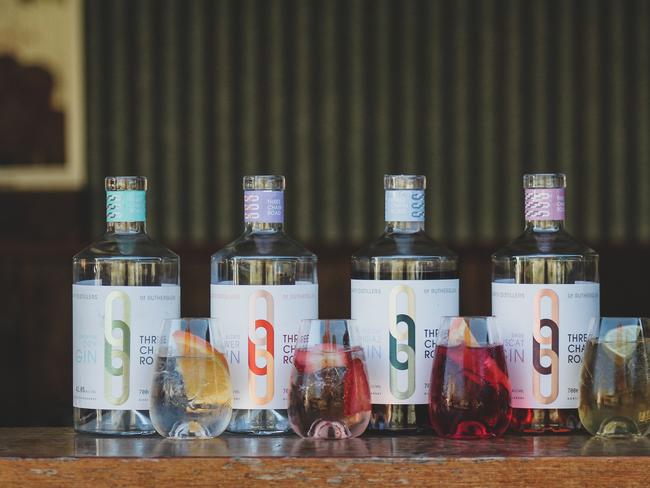
The wineries are also relaxing lunch destinations. Mandy Jones snared Albury-born chef Briony Bradford after an international and Sydney sojourn, and she likes using local ingredients the French way, such as goat roulade, followed by unpasteurised gruyere layered with house-made lavoche as a mille feuille. At Cofield winery’s Footsteps, chef Jordan Rosmulder champions local charcuterie, beef and “whatever you find in the vineyard, such as rabbit and roo”. Lake Moodemere’s Jarrod Smith makes full use of the estate’s lamb, the same animals you may see keeping the grass down among the vines.
At night, Tuileries restaurant in De Bortoli’s historic Rutherglen Estate complex is classic dining, accompanied by De Bortoli’s wider Australian list. At Thousand Pound Wine Bar and Store, the menu may be simple but not so the wines, sourced by owners the Brown family (All Saints) from other small wineries all over the world.
Eventually in Rutherglen, you return to muscat, and at Pfeiffer to pick up some of the varietal-specific muscat glasses we used in the mixing session, winemaker Jen Pfeiffer acknowledges the value of so many of the wineries being run by individual families over generations. “This isn’t the sort of winemaking you learn at uni,” Pfeiffer says. “It’s why it’s a family thing.” She learned at the knee of her revered father Chris, for whom it’s a calling of the highest order. “Muscat,” he says, “is Australia’s gift to the world of wine.”
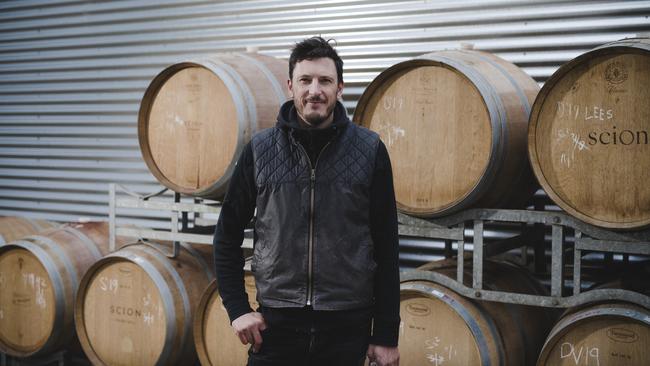
In the know
Most Rutherglen winemakers have crafted experiences around their muscats under the umbrella of The Muscat Mile. For instance, the True Muscat Experience at Pfeiffer is $135 a person for the hour-long tutored tasting and blending. Others provide the likes of muscat flights, food-matching sessions and tours. Bookings are essential.
In Rutherglen, stay at the modern Tuileries at De Bortoli (from $199 a night), or the historic vineyard accommodation at Mount Ophir Estate (from $280 a night).
Jeremy Bourke was a guest of the Winemakers of Rutherglen.



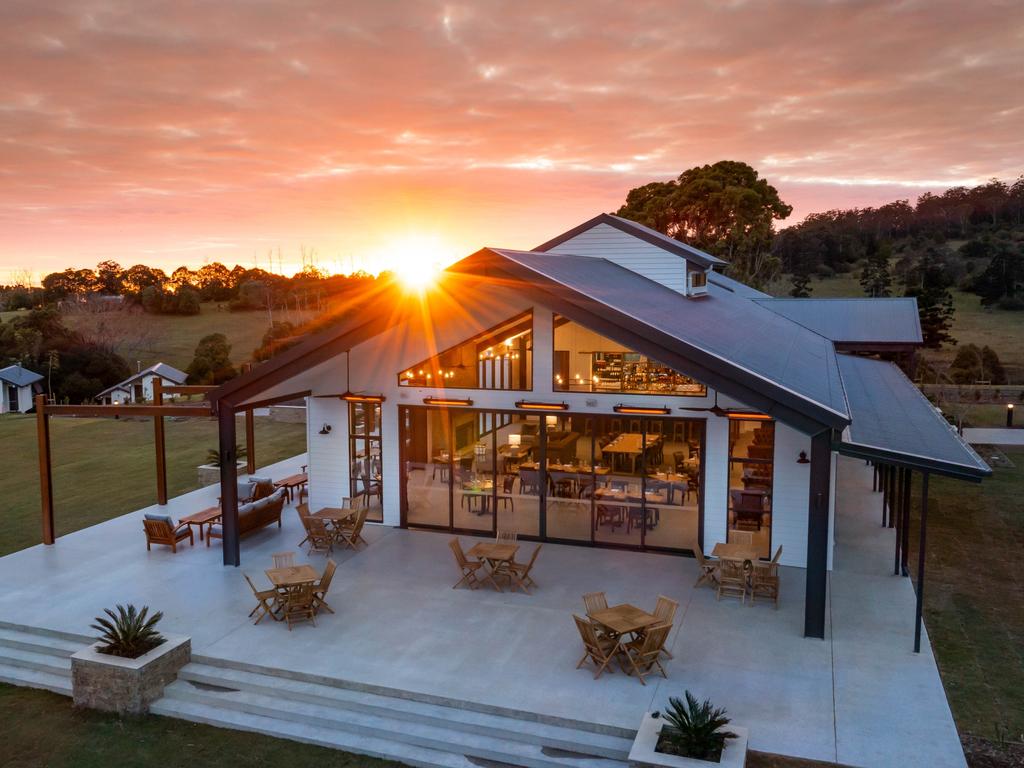
To join the conversation, please log in. Don't have an account? Register
Join the conversation, you are commenting as Logout